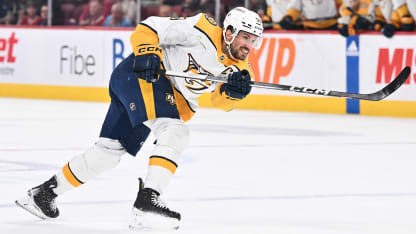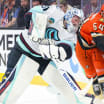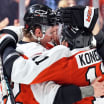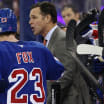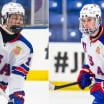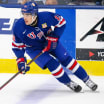Zdeno Chara’s days in the NHL are over. The future Hall of Fame defenseman retired after the 2021-22 season, ending a 24-season career that included a Norris Trophy as the best defenseman in the NHL, a Stanley Cup win, and years of dominance.
But even though Chara’s days are now given over to training for marathons and Ironman competitions -- “Whatever comes, I kind of say yes to everything right now,” he said, laughing, “I’ve got to calm down.” -- that doesn’t mean he can’t still impact the League he called home for so long.
Chara first saw Rezztek blade grips before they were known as Rezztek, before players in the NHL had started using the new technology, when a friend showed up at a pickup hockey game with the grips on his stick.
He immediately was intrigued.
“It literally looked like a sandpaper sticker on the blade,” Chara said. “It got my attention.”
The product was only in the alpha stage of testing, but Chara liked it. He liked it so much that he bought into the company, and started giving his own feedback on how it could be improved, made better, lighter, more efficient. By 2018, it was good enough that Chara abandoned his usual tape and started using Rezztek exclusively.
To him, it was an interesting phenomenon. For so long, every aspect of hockey -- the sticks and gloves, the pads and helmets, everything -- had gotten a makeover. He, for one, had started out using heavy wooden sticks, finding it a revelation when composites were born. Here, he saw another step forward.
“I think that when we look at tape, the tape itself has not been changed for over 100 years,” Chara said. “Nothing’s been done with the tape. Everything is evolving, everything is getting lighter, better, more durable, you name it. But hockey tape, for some reason, has not been innovated for more than 100 years. We are challenging this status quo.”
Instead of winding traditional tape around the blade of a hockey stick, Rezztek is a four-layer sticker that adheres to the blade and, according to Chara, weighs less and improves shot speed by three percent, shot accuracy by six percent and is water resistant. It also can be customized with everything from a team logo to Spider-man.
When Vancouver Canucks defenseman Filip Hronek launched a shot that was clocked at 100.37 mph against the New York Islanders on Nov. 15, he was using Rezztek on his stick.

